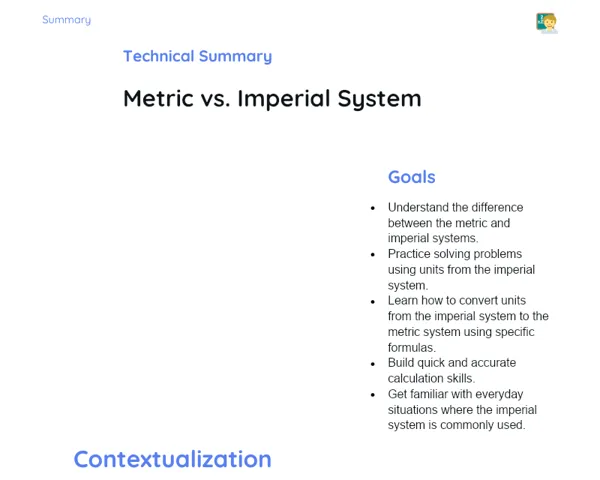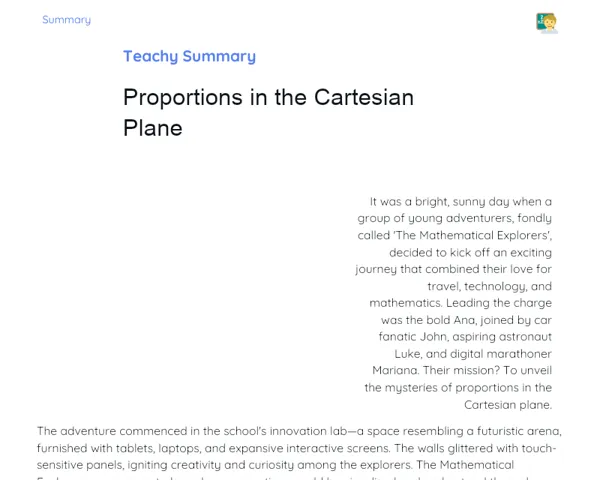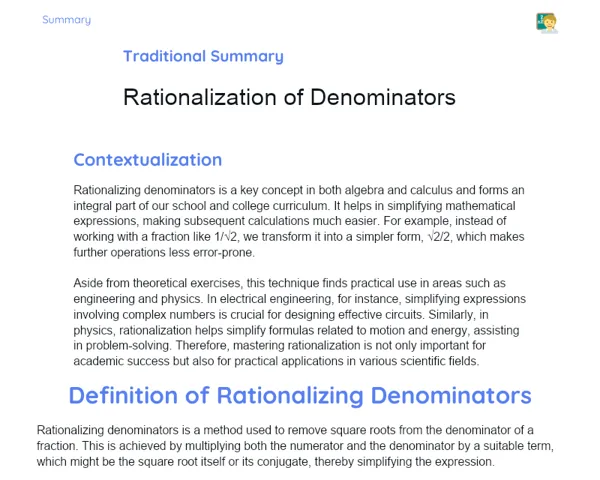Socioemotional Summary Conclusion
Goals
1. Organize various objects into groups that have common attributes like color, material, shape, and size.
2. Enhance the ability to recognize and name different attributes of objects.
Contextualization
Did you know that organizing objects can be quite an exciting task? Just picture arranging a box full of toys based on their colors, shapes, or sizes! Not only does this make everything look neater and easier to find, but it also helps us understand the world around us better and even connect with our own emotions. Let’s explore how we can make this task both enjoyable and meaningful in our everyday lives! 🧩✨
Exercising Your Knowledge
Sorting by Color
Organizing objects by color is a delightful and visually appealing way to group items. When we sort objects by their colors, we are using an easily recognizable characteristic, which streamlines the organization process. Additionally, this activity fosters visual perception and enhances attention to detail.
-
Makes it easier to identify and locate objects in day-to-day life.
-
Boosts visual perception and attention to detail.
-
Develops categorization and organizational skills.
Sorting by Shape
Grouping objects by shape involves classifying items with similar geometric forms, like circles, squares, and triangles. This practice not only strengthens students' understanding of shapes but also promotes critical thinking as they analyze how different shapes can be organized together.
-
Enhances comprehension of basic geometric concepts.
-
Fosters analytical and critical thinking abilities.
-
Encourages the identification and grouping of objects based on specific physical attributes.
Sorting by Size
Organizing items by size is a competency that necessitates spatial awareness and comparison of dimensions. By categorizing objects according to their size, students learn to discern differences and similarities, which is vital for developing mathematical reasoning and problem-solving skills.
-
Enhances spatial awareness and the ability to compare sizes.
-
Aids in developing mathematical reasoning.
-
Facilitates problem-solving by identifying patterns and distinctions.
Key Terms
-
Attributes: Observable characteristics that can help classify objects, such as color, shape, size, and material.
-
Classification: The method of organizing objects into groups or categories based on shared characteristics.
-
Visual Perception: The capability to recognize and interpret visual information.
For Reflection
-
What feelings arise when you organize your toys or stationery by color, shape, or size? Does it change how you perceive these items?
-
In what ways can organizing objects aid in sorting your emotions and thoughts? Have you ever tried categorizing your feelings?
-
How did the experience of sorting objects in a group enhance your cooperation and communication skills? What insights did you gain about teamwork?
Important Conclusions
-
Organizing objects by attributes such as color, shape, size, and material deepens our understanding of our surroundings and nurtures mathematical and social skills.
-
The practice of organization fosters self-awareness and emotional regulation, as it enables us to identify and manage our emotions more effectively.
-
Grouping objects not only sharpens our ability to categorize and analyze characteristics but also strengthens our skills in cooperation and communication.
Impacts on Society
Sorting objects by attributes holds significant importance in our daily lives. Just imagine how difficult it would be to find a yellow pencil in a messy pile of school supplies! By honing this skill, we create a more efficient and pleasant environment that streamlines our daily activities. 🚀
On an emotional level, learning to categorize objects equips us to recognize and structure our own feelings. When we can identify and comprehend what we're feeling, we can respond more appropriately and healthily to our surroundings. This empowers us to be more empathetic and to tackle emotional challenges in a constructive manner. 🌈
Dealing with Emotions
To implement the RULER method at home, try this exercise: Find a calm space and reflect on a time when sorting objects felt challenging. First, recognize that emotion; for instance, you might have felt annoyed. Next, understand what caused that annoyance—maybe choosing the right category for an object was tough. Name that emotion as 'annoyance' and express how you coped, perhaps by seeking help from a friend or trying a new approach. Finally, contemplate a way to regulate that emotion next time, like taking a moment to breathe before making a decision or splitting the task into manageable parts. 💡
Study Tips
-
Organize your school supplies into categories (pencils, erasers, notebooks) for easy access and to keep everything tidy. 💼
-
Practice sorting toys or other items at home by color, shape, or size. This reinforces your learning while making it enjoyable! 🧸
-
Try to identify and jot down your emotions in a journal each day. Documenting how you feel at different times can enhance your understanding and regulation of your emotions. 📓



